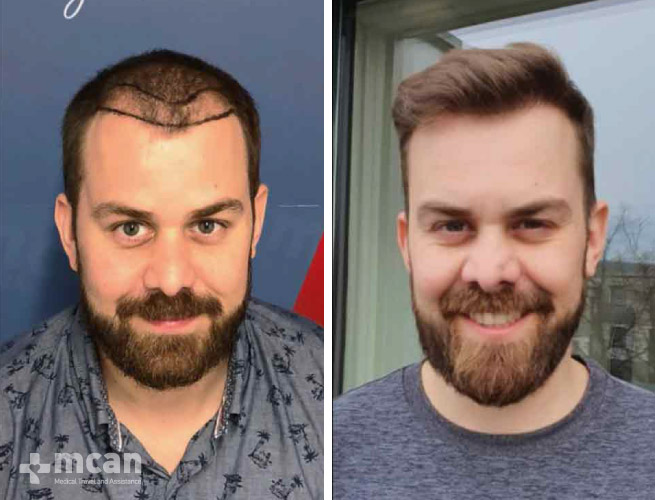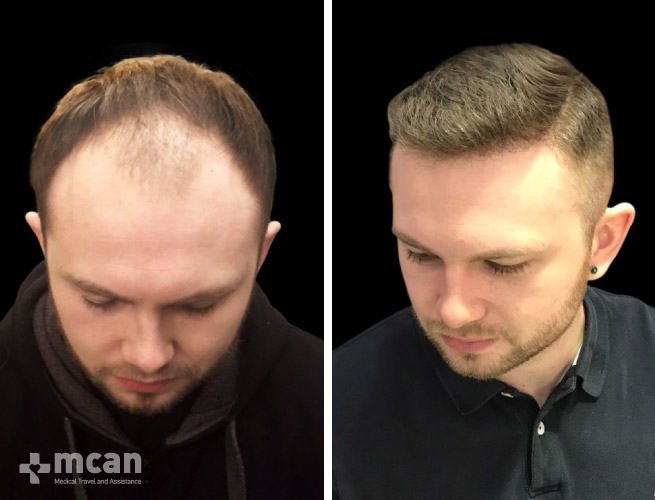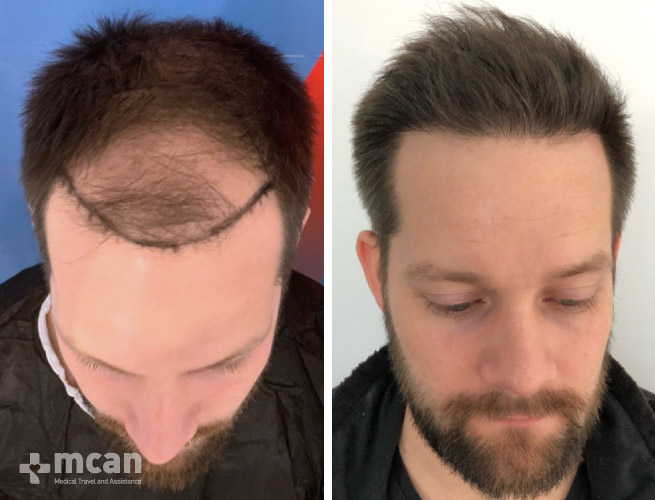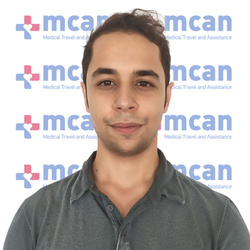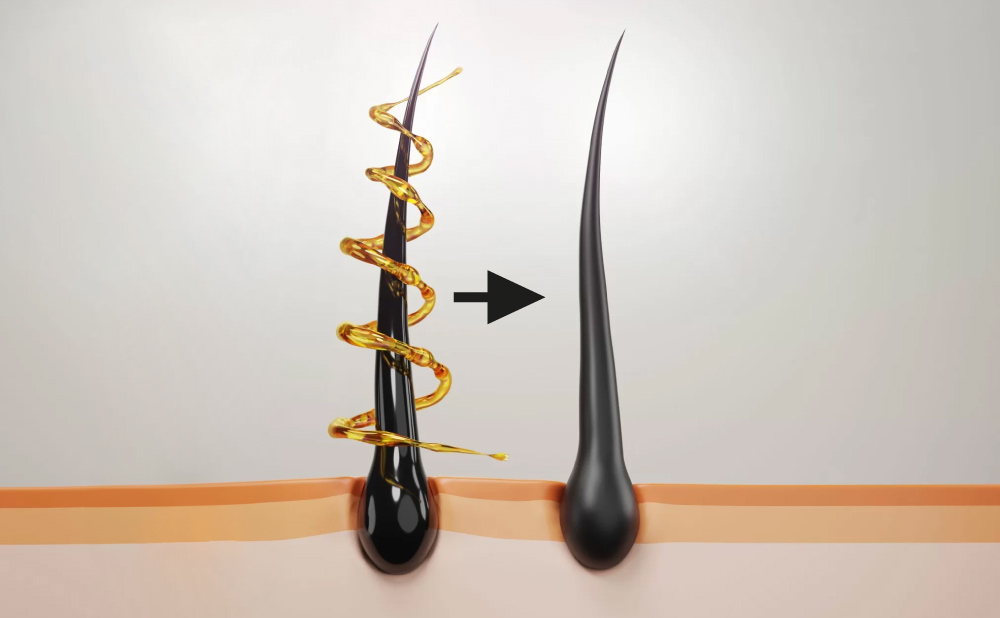
Hair loss is a widespread concern for many people, stemming from various factors such as aging, genetics, hormonal fluctuations, nutritional deficiencies, poor hair care habits, and certain medical conditions. Androgenetic alopecia stands out as the most prevalent cause among these factors. In response to hair loss challenges, people have increasingly turned to hair transplant procedures, a surgical method involving the transfer of hair follicles from a designated ‘donor site’ to a bald or thinning area known as the ‘recipient site.’
However, hair restoration methods are evolving, with an intriguing development known as hair cloning. This innovative technique, researched and discussed for nearly a decade, involves significant advancements, marking a breakthrough in the field. So, you may wonder ‘’Could hair cloning be the future of hair loss treatment?’’. Let’s explore hair cloning in detail together!

Understanding the Basics of Hair Follicle Cloning
Hair transplant redistributes existing hair but doesn’t increase overall hair quantity. Therefore, limited donor hair has long presented a challenge for hair restoration surgery. So, can hair cloning be a remedy for this challenge? Is it the future of hair transplant? How does it work? A hair strand, which is strong, is produced by many stem cells called dermal papillae that are found at the base, or bulb, of every hair follicle.
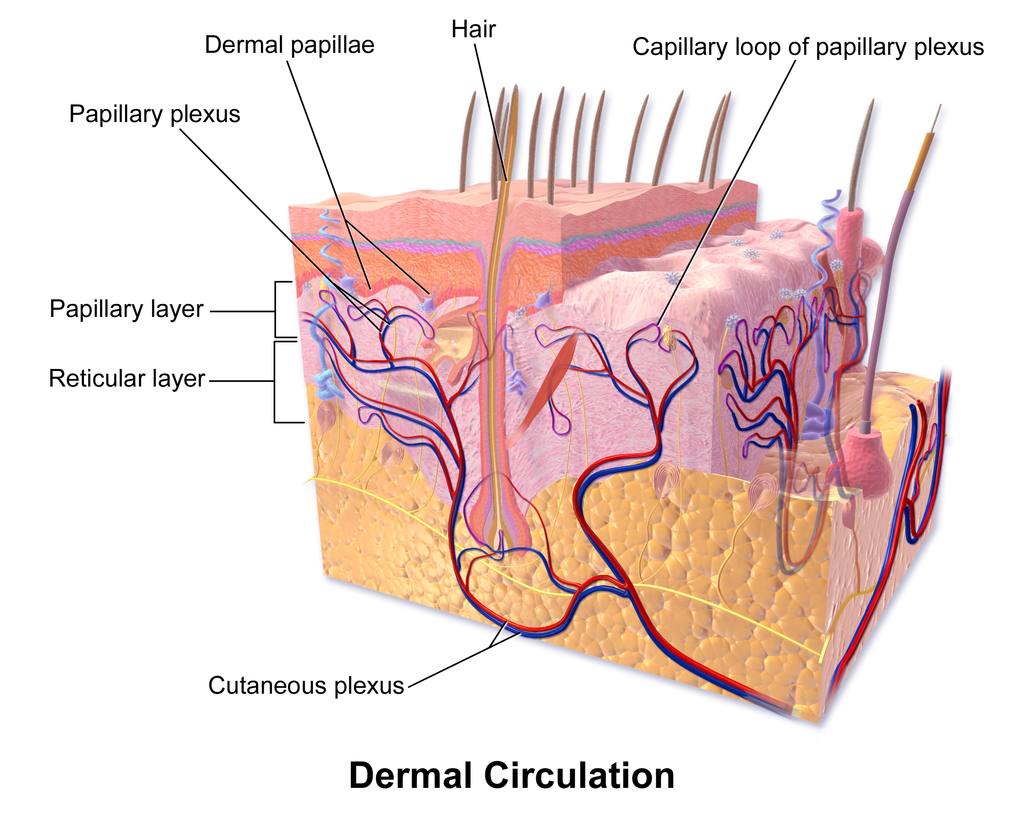
This approach entails cultivating cells from a DHT-resistant scalp in a laboratory and subsequently transplanting them to a scalp experiencing hair loss. DHT, which is produced from testosterone, is known to play a role in the shrinking of hair follicles in people who are genetically predisposed to baldness. By using a process called tissue culturing, these resilient cells can be multiplied to thousands. The technique takes advantage of the stem cell’s ability to survive even when hair follicles shrink due to genetics and DHT. (Neuschatz, 2022).
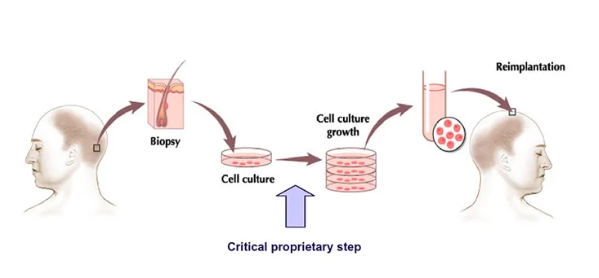
Photo retrieved from: Farjo
So… Is Clone Hair Transplant Possible? Would It Look Like the Same?
By using a sample of 50 to 100 hairs, hair follicle cloning has the potential to produce thousands of hairs. However, human clinical trials have not shown to be helpful in this regard, despite improvements being seen in animal research.
Also, the most challenging part of clone hair transplant is ensuring that the transplanted cells generate hair with the same aesthetic qualities as the original hair. There is no assurance that the newly induced hair will grow to a sufficient length for cosmetic significance, or that it will display its natural color, thickness, or texture after hair cloning. Maintaining cells in a differentiated (hair-like) state during multiplication is the main technical challenge in hair cloning because these cells have a tendency to de-differentiate and behave like fibroblasts. So, successful hair cloning must go beyond producing hair growth, it should also provide natural results and there are still concerns on how to achieve it with this method. (ISHRS, 2023)
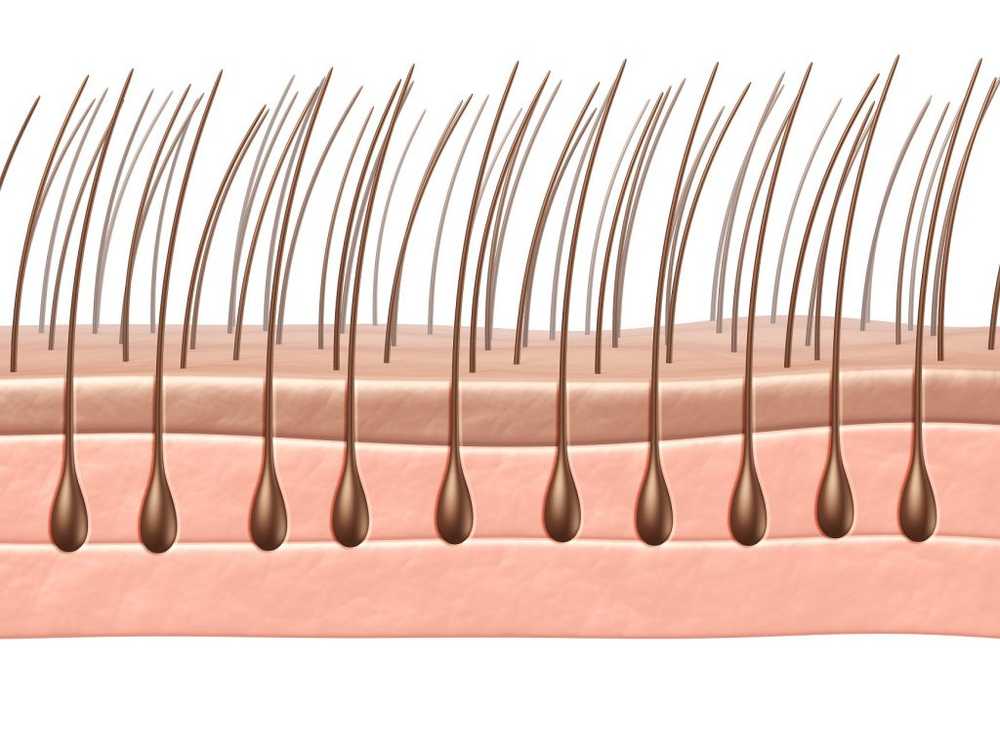
Latest Research and Achievements in Hair Cloning
Although current research on hair follicle cloning has not produced very promising results for the near future, in late 2023 a new approach to this topic was introduced. Scientists at Rensselaer Polytechnic Institute have achieved a groundbreaking achievement by 3D-printing hair follicles within human skin tissue in a lab setting. 3D printing technology has never been used before for cloning hair follicles before. So, how did they do it?
- Using 3D printing techniques, the researchers first cultivated skin and follicle cells to produce a large number of printable cells.
- After that, proteins were added to them to make a unique “bio-ink” for the printer.
- The bio-ink was carefully applied layer by layer with an incredibly thin needle to create the skin and create channels for the placement of hair cells.
- Skin cells moved into these channels over time, imitating the structures of natural follicles.
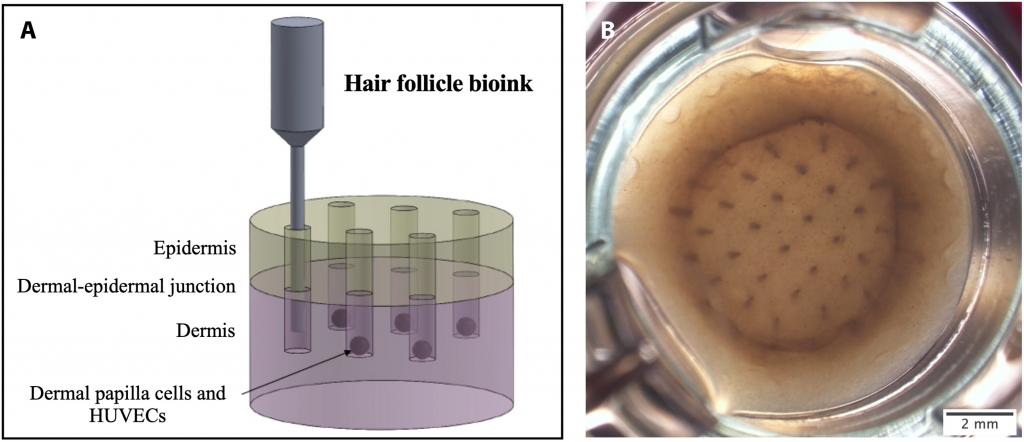
Photo retrieved from the: Science Advances
When Will Hair Cloning be Available Then?
The current drawback of these engineered tissues is they have a very limited lifespan, around two to three weeks, which prevents hair shaft growth. However, the researchers stated that their aim is to extend this duration in future works of clone hair transplant. The discovery is very important, although it’s expected to take several years to develop engineered skin grafts that can stimulate hair growth. The study demonstrated how hair follicle structures can be precisely created using 3D bioprinting. This automated method is crucial for enabling skin biomanufacturing in the future.
What Are the Current Advanced Techniques for Hair Loss?
So, those were the potential future of hair loss treatment. A future where we’re not just moving hair from one place to another but we can actually grow new hair follicles in a lab… It’s a game-changer, for sure. But what if you do not want to wait any longer to treat hair loss and want a solution ASAP? So, let’s see hair transplant advances for you!
- Follicular Unit Extraction (FUE): FUE is an advanced and popular technique where individual hair follicles are extracted from the donor area and then transplanted to the recipient area. It is suitable for people experiencing extreme hair loss.
- Sapphire FUE: It is a variation of the traditional FUE technique, with a key difference being the use of sapphire blades instead of steel ones. The use of sapphire blades reduces trauma to the scalp, results in less scarring, and potentially faster healing.
- Direct Hair Implant (DHI): DHI, is another advanced technique that utilizes the CHOI Pen. It is especially suitable for people unwilling to cut their hair and with small areas of baldness to address. The key difference of the DHI lies in the simultaneous creation of channels and implantation of grafts, streamlining the process.
- Stem Cell: Stem cell hair treatment involves using stem cells, often derived from sources like adipose tissue to stimulate hair follicles. These undifferentiated cells have regenerative potential and can differentiate into various cell types, supporting hair growth. For totally bald areas, it is also possible to combine stem cell therapy with hair transplantation. This will help both the donor and recipient areas heal more quickly, experience less inflammation, and possibly produce results that are more successful and natural-looking.
It is always important to consult with a hair transplant expert to decide the best hair loss solution for you. Hair transplant procedures require customized solutions. MCAN Health has been offering hair transplantation in Istanbul, Turkey since 2015 and below you can find the MCAN Health’s patients before and after photos.
